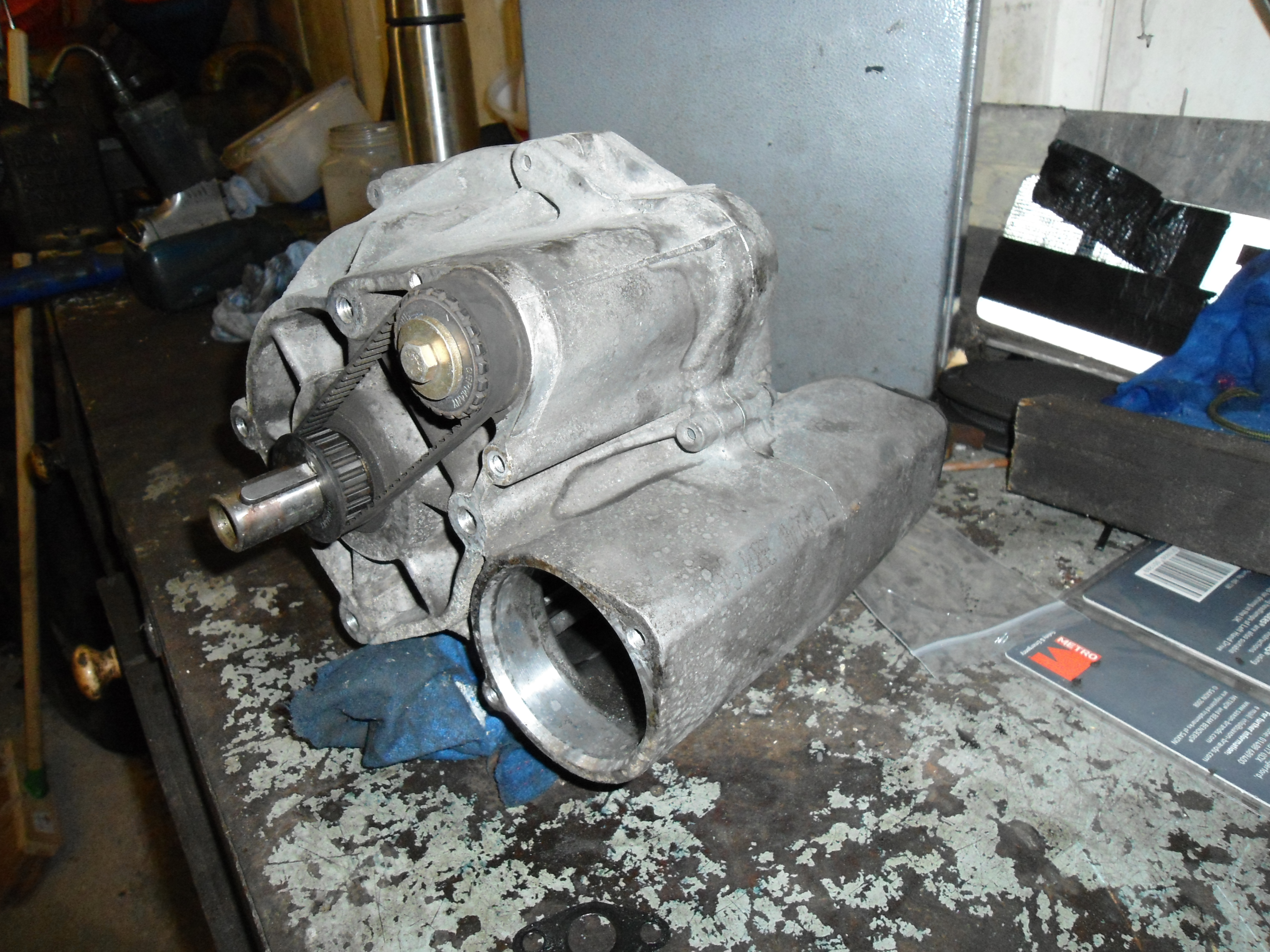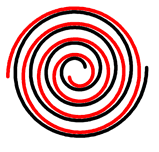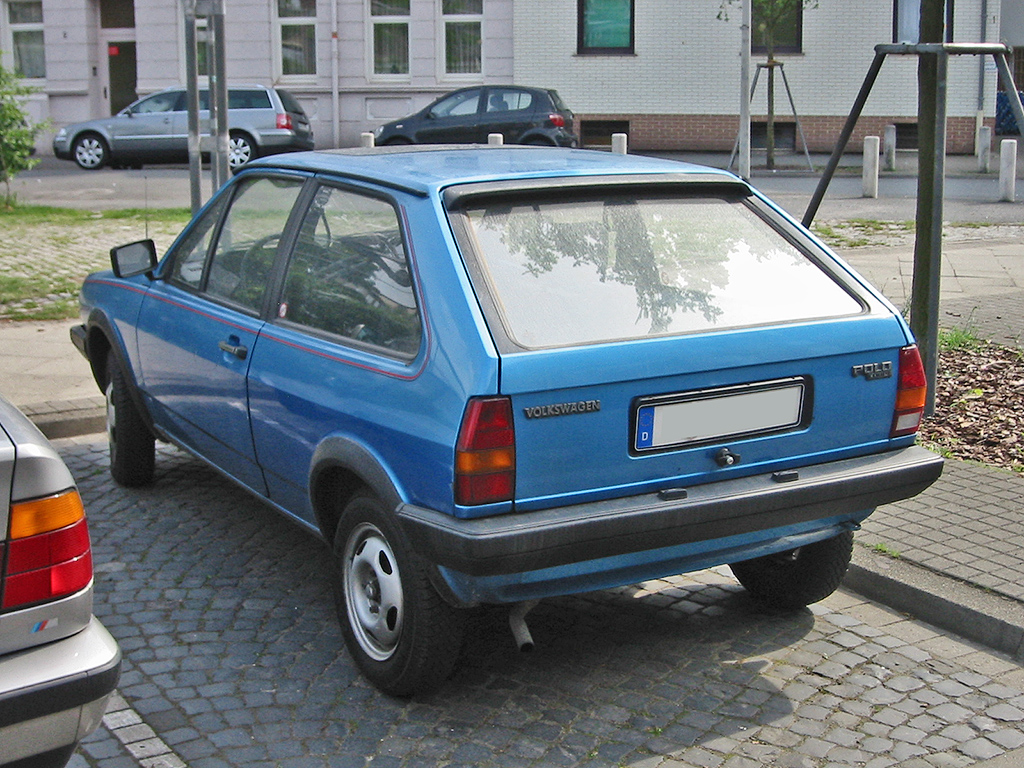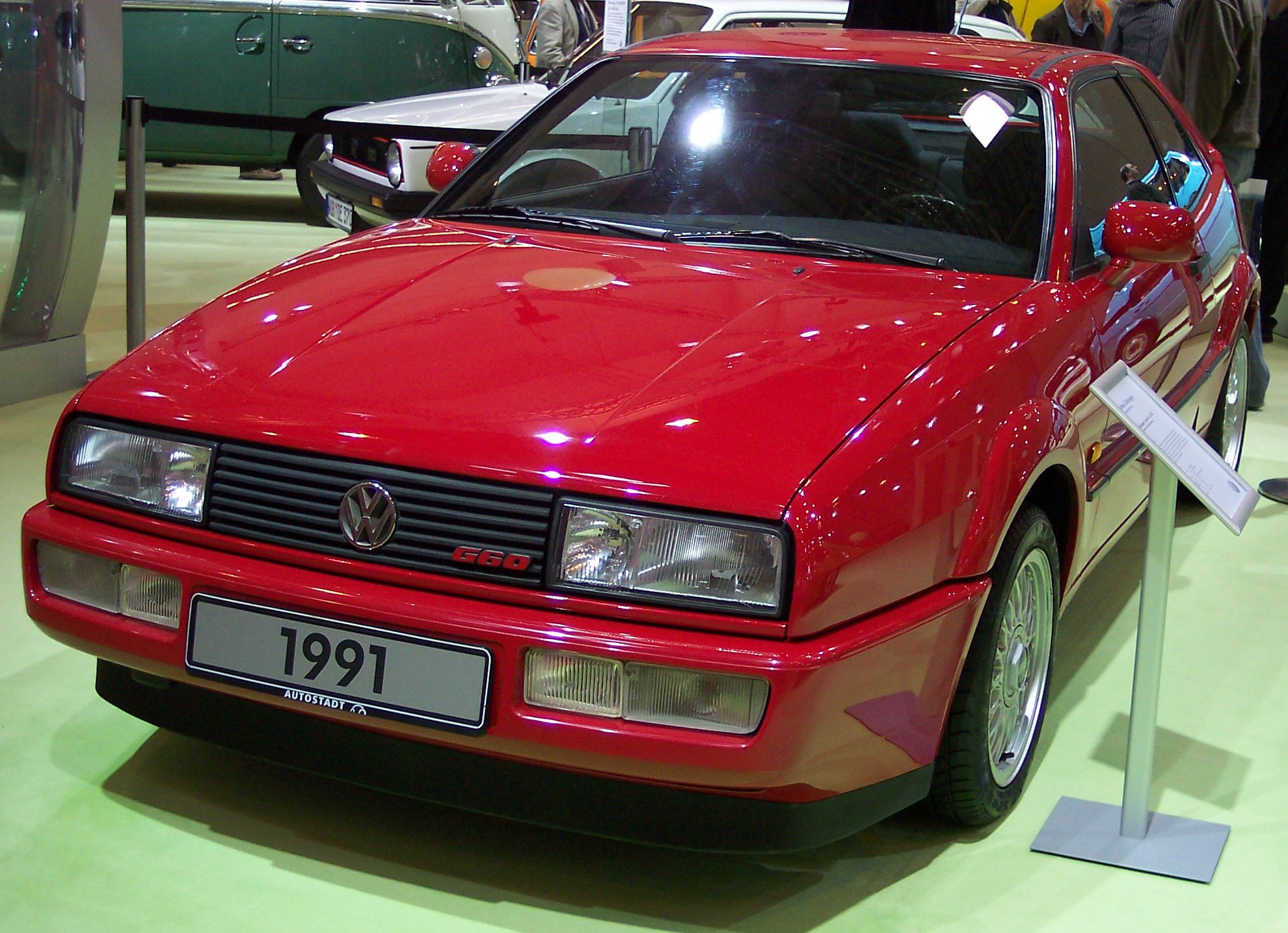|
G-Lader
The G-Lader is a scroll-type supercharger used in various Volkswagen Passenger Cars models. Its purpose is to increase the motive power output from the internal combustion engine attainable with a given engine displacement. Since it is not enough to simply inject more fuel, as this produces too rich an air-fuel mixture, more intake air has to be added at the same time. This can be achieved with an exhaust-driven turbocharger, or a crankshaft-driven positive displacement compressor. The G-Lader is in the compressor category, since it is crankshaft-driven and does not have the "lag" usually associated with turbocharged engines. History This type of air pump, notable for low noise and high efficiency, was patented on 3 October 1905 by Léon Creux of France (US Patent 801,182). Due to the very imprecise production methods of the period, however, it was not manufacturable for a long time, since the displacer (described below) inside the compressor comes within tenths of a milli ... [...More Info...] [...Related Items...] OR: [Wikipedia] [Google] [Baidu] |
Scroll-type Supercharger
The scroll-type supercharger is a scroll compressor used as a positive displacement orbiting-spiral supercharger. It is a compromise between the more rugged rotating lobe, and the more efficient sliding vane type superchargers, and is considered to offer the highest potential in regard to efficiency, noise and pressure fluctuation. History The basic concept of the scroll-type supercharger was invented by Léon Creux of France in 1905, originally for aircraft use, though Creux did consider it as a possible form of steam engine. However, Creux's supercharger failed due to the relatively poor casting techniques available at the time. This type of supercharger has not seen widespread use in the aviation role, but has been used on a small number of automotive applications. Description The moving parts of the supercharger is a disc-shaped displacer with identical spirals (or scrolls) projecting from each side, and manufactured from light alloy to reduce inertia. A pair of fixed scro ... [...More Info...] [...Related Items...] OR: [Wikipedia] [Google] [Baidu] |
Volkswagen Polo G40
The Volkswagen Polo Mk2 and Polo Mk2F were available as supercharged G40 models - called the Volkswagen Polo G40 (sometimes also called Volkswagen Polo GT G40, Volkswagen Polo G-40, or simply Volkswagen Polo G). Mk2 At the heart of the Polo GT G40 was its 1.3 litre G40 engine (engine ID code: PY). It displaced from a cylinder bore of , and a piston stroke of . The G40s 'G-Lader' supercharger had a displacer width of , hence the "G40" name. This G40 engine produced a maximum power output of at 6,000 rpm, and torque of at 3,600 rpm. Stopping power came from uprated front disc brakes, now radially ventilated, sized at in diameter by thick, with ATE single-piston sliding calipers. Standard roadwheels were 13x5.5 ET38 silver 'Hockenheim' alloy wheels with 175/60 H13 tyres. Polo G40 Original Specification Performance f ... [...More Info...] [...Related Items...] OR: [Wikipedia] [Google] [Baidu] |
Volkswagen Polo Mk2
The Volkswagen Polo Mk2 is the second generation of the Volkswagen Polo supermini. It was produced from late 1981 until 1994. It received a major facelift in 1990 and was available in three different body styles, including a distinctive "'' kammback''"-styled hatchback, nicknamed ''breadvan''. The sedan version received the name of Volkswagen Derby. Initial release A revised Polo model (known as the Mark 2 or Mark II, internally designated ''Typ 86C'') was introduced in October 1981, with the major change being the introduction of a new body style with a steep (almost vertical) rear window, as well a version with a diagonal rear window and a similar profile to the previous model. These two body styles were called the ''Hatchback'' and ''Coupé'' respectively, although in fact both were three-door hatchbacks. The latter was added to the range in 1983 as the radical styling of the original design was not welcomed by all. The Coupé was originally only available with the more powe ... [...More Info...] [...Related Items...] OR: [Wikipedia] [Google] [Baidu] |
Volkswagen G60 Engine
The Volkswagen G60 and G40 were inline-four cylinder automobile petrol engines, which uses a specific method of forced induction - by way of a scroll-type supercharger. The G60 engine was formerly manufactured by the German automaker Volkswagen Group, and was installed in a limited number of their 'hot hatch' cars from their Volkswagen Passenger Cars marque from August 1988 to July 1993. A smaller G40 engine of identical design had earlier been installed in the Mk2 Volkswagen Polo GT G40 from August 1986 to July 1994. Design and specifications The G60 is a internal combustion engine, from a cylinder bore of , and a piston stroke of . Its cylinder block is constructed from grey cast iron, and its cylinder head is cast aluminium alloy, with additional post-production heat treatment. The crankcase contains a forged steel crankshaft which runs in five main bearings, and cast pistons with increased size gudgeon pins. It has two valves per cylinder (eight valves in total), whic ... [...More Info...] [...Related Items...] OR: [Wikipedia] [Google] [Baidu] |
Volkswagen Golf Mk2
The Volkswagen Golf Mk2 is a hatchback, the second generation of the Volkswagen Golf and the successor to the Volkswagen Golf Mk1. It was Volkswagen's highest volume seller from 1983 and ended in (German) production in late 1992, to be replaced by the Volkswagen Golf Mk3. The Mk2 was larger than the Mk1; its wheelbase grew slightly (+ ), as did exterior dimensions (length + , width + , height + ). Weight was up accordingly by about . Exterior design, developed in-house by VW design director Schäfer, kept the general lines of its Giorgetto Giugiaro, Giugiaro-designed predecessor, but was slightly more rounded. All told, about 6.3 million second-generation Golfs were built. Golf Mark 2 The second-generation Volkswagen Golf (also known as the ''Typ 19E'' until the 1991 model year, and ''Typ 1G'' thereafter) was launched in Europe at the Frankfurt Motor Show in September 1983, with sales beginning in its homeland and most other left-hand drive markets soon after. It debuted in Marc ... [...More Info...] [...Related Items...] OR: [Wikipedia] [Google] [Baidu] |
Gas Compressor
A compressor is a mechanical device that increases the pressure of a gas by reducing its volume. An air compressor is a specific type of gas compressor. Compressors are similar to pumps: both increase the pressure on a fluid and both can transport the fluid through a pipe. The main distinction is that the focus of a compressor is to change the density or volume of the fluid, which is mostly only achievable on gases. Gases are compressible, while liquids are relatively incompressible, so compressors are rarely used for liquids. The main action of a pump is to pressurize and transport liquids. Many compressors can be staged, that is, the fluid is compressed several times in steps or stages, to increase discharge pressure. Often, the second stage is physically smaller than the primary stage, to accommodate the already compressed gas without reducing its pressure. Each stage further compresses the gas and increases its pressure and also temperature (if inter cooling between stages i ... [...More Info...] [...Related Items...] OR: [Wikipedia] [Google] [Baidu] |
Volkswagen G40 Engine
Volkswagen (),English: , . abbreviated as VW (), is a German motor vehicle manufacturer headquartered in Wolfsburg, Lower Saxony, Germany. Founded in 1937 by the German Labour Front under the Nazi Party and revived into a global brand post-World War II by the British Army Officer Ivan Hirst, it is known for the iconic Beetle and serves as the flagship brand of the Volkswagen Group, the largest automotive manufacturer by worldwide sales in 2016 and 2017. The group's biggest market is in China, which delivers 40 percent of its sales and profits. Its name is derived from the German-language terms and , translating to "people's car" when combined. History 1932–1940: People's Car project Volkswagen was established in 1937 by the German Labour Front (''Deutsche Arbeitsfront'') in Berlin. In the early 1930s, cars were a luxury – most Germans could afford nothing more elaborate than a motorcycle and only one German out of 50 owned a car. Seeking a potential new market, some c ... [...More Info...] [...Related Items...] OR: [Wikipedia] [Google] [Baidu] |
Gauge Pressure
Pressure measurement is the measurement of an applied force by a fluid (liquid or gas) on a surface. Pressure is typically measured in units of force per unit of surface area. Many techniques have been developed for the measurement of pressure and vacuum. Instruments used to measure and display pressure mechanically are called pressure gauges, vacuum gauges or compound gauges (vacuum & pressure). The widely used Bourdon gauge is a mechanical device, which both measures and indicates and is probably the best known type of gauge. A vacuum gauge is used to measure pressures lower than the ambient atmospheric pressure, which is set as the zero point, in negative values (for instance, −1 bar or −760 mmHg equals total vacuum). Most gauges measure pressure relative to atmospheric pressure as the zero point, so this form of reading is simply referred to as "gauge pressure". However, anything greater than total vacuum is technically a form of pressure. For very low press ... [...More Info...] [...Related Items...] OR: [Wikipedia] [Google] [Baidu] |
Wankel Engine
The Wankel engine (, ) is a type of internal combustion engine using an Eccentric (mechanism), eccentric rotary combustion engine, rotary design to convert pressure into rotating motion. It was invented by German engineer Felix Wankel, and designed by German engineer Hanns-Dieter Paschke. The Wankel engine's rotor, which creates the turning motion, is similar in shape to a Reuleaux triangle, with the sides having less curvature. The rotor rotates inside an oval-like epitrochoidal housing, around a central output shaft. The rotor spins in a hula-hoop fashion around the central output shaft, spinning the shaft via toothed gearing. Due to its inherent poor thermodynamics, the Wankel engine has a significantly worse thermal efficiency and worse exhaust gas behaviour when compared against the Otto engine or the Diesel engine, which is why the Wankel engine has seen limited use since its introduction in the 1960s. However, its advantages of compact design, smoothness, lower weight and ... [...More Info...] [...Related Items...] OR: [Wikipedia] [Google] [Baidu] |
Seal (mechanical)
A mechanical seal is a device that helps join systems and mechanisms together by preventing leakage (e.g. in a pumping system), containing pressure, or excluding contamination. The effectiveness of a seal is dependent on adhesion in the case of sealants and compression in the case of gaskets. The seals are installed in pumps in a wide range of industries including chemicals, water supply, paper production, food processing and many other applications. A stationary seal may also be referred to as 'packing'. Seal types: *Induction sealing or cap sealing * Adhesive, sealant * Bodok seal, a specialized gas sealing washer for medical applications * Bonded seal, also known as Dowty seal or Dowty washer. A type of washer with integral gasket, widely used to provide a seal at the entry point of a screw or bolt * Bridgman seal, a piston sealing mechanism that creates a high pressure reservoir from a lower pressure source *Bung *Compression seal fitting *Diaphragm seal *Ferrofluidic se ... [...More Info...] [...Related Items...] OR: [Wikipedia] [Google] [Baidu] |
Spirals
In mathematics, a spiral is a curve which emanates from a point, moving farther away as it revolves around the point. Helices Two major definitions of "spiral" in the American Heritage Dictionary are:Spiral ''American Heritage Dictionary of the English Language'', Houghton Mifflin Company, Fourth Edition, 2009. # a curve on a plane that winds around a fixed center point at a continuously increasing or decreasing distance from the point. # a three-dimensional curve that turns around an axis at a constant or continuously varying distance while moving parallel to the axis; a . The first definition describes a |
Corrado G60 Supercharger
Corrado may refer to: Places *Anticoli Corrado, comune in the City of Rome *Monte Vidon Corrado, comune in the Province of Fermo People Given name *See Corrado (given name) Surname *Andrea Corrado (1873-1963), Italian ship owner *Andrea Di Corrado (born 1988), Italian cyclist *A. J. Corrado (born 1992), American former soccer player *Carol Corrado, American economist *Frank Corrado (born 1993), Canadian ice hockey player *Giambono di Corrado (1400s), Italian painter *Gino Corrado (1893-1982), Italian actor *Kristin Corrado (born 1965), American politician *Niccolò Corrado (born 2000), Italian football player *Regina Corrado, American television writer * Sebastian Corrado (died 1556), Italian grammarian Other * Volkswagen Corrado The Volkswagen Corrado is a compact four passenger (2+2), three door, front-engine, front-wheel-drive liftback coupe marketed by Volkswagen from 1988 until 1995, and manufactured by Karmann in Osnabrück, Germany. Designed by Herbert Schäfer, ..., a ... [...More Info...] [...Related Items...] OR: [Wikipedia] [Google] [Baidu] |




.jpg)



